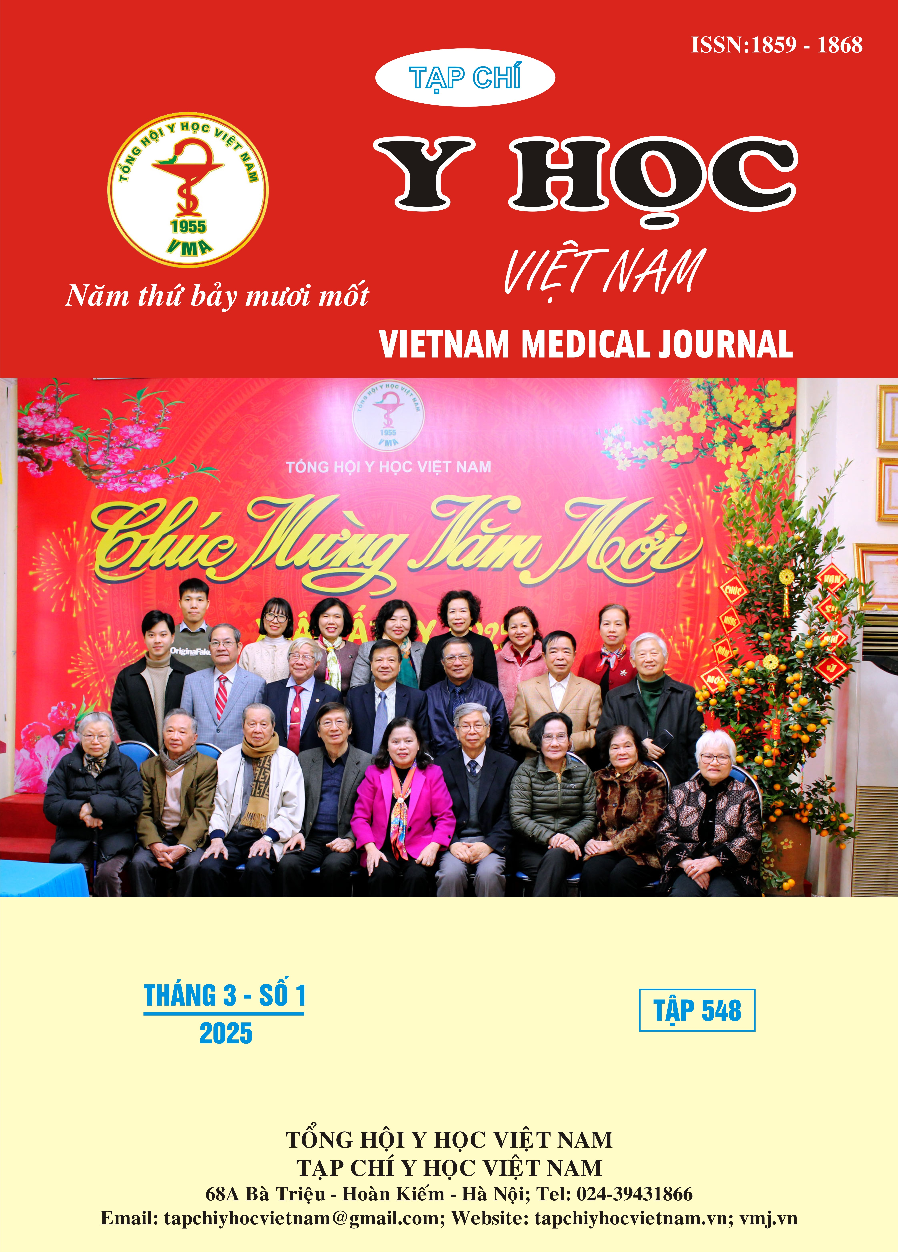THE VALUE OF MAGNETIC RESONANCE IMAGING IN ASSESSING INVASION OF THE HEART AND GREAT VESSELS IN ANTERIOR MEDIASTINAL TUMORS
Main Article Content
Abstract
Objective: Assessing the degree of adhesion/invasion of anterior mediastinal tumors to cardiovascular structures is crucial in surgical planning and treatment prognosis. This study aims to determine the value of CINE sequences in cardiac magnetic resonance imaging (MRI) for diagnosing adhesion or invasion of anterior mediastinal tumors into adjacent cardiovascular structures. Methods: This cross-sectional descriptive study included patients with anterior mediastinal tumors who underwent surgery at the University Medical Center Ho Chi Minh City from November 2018 to June 2023. Preoperative cardiac MRI with CINE sequences was performed. Adhesion/invasion to cardiovascular structures, including the heart, thoracic aorta, pulmonary artery, and superior vena cava, was assessed based on two criteria: loss of sliding motion and loss of the fat plane on CINE images. MRI findings were compared with intraoperative evaluations to determine diagnostic accuracy. Results: Among 106 patients, CINE MRI correctly identified 20 out of 23 cases of cardiovascular adhesion/invasion, with three false negatives and three false positives. The highest sensitivity (100%) was observed for cardiac invasion, while the lowest sensitivity (78.6%) was noted for the superior vena cava. The specificity was highest for the thoracic aorta (95.4%) and lowest for the superior vena cava (77.8%). Overall, CINE MRI demonstrated a high diagnostic accuracy of 93.2%. Conclusion: CINE MRI is a valuable imaging modality for assessing adhesion/invasion of anterior mediastinal tumors into cardiovascular structures. It provides critical information for surgical planning, offering improved accuracy in preoperative evaluation compared to traditional imaging techniques.
Article Details
Keywords
Magnetic resonance imaging, CINE sequence, Anterior mediastinal tumor, Invasion
References
2. Azour L, Moreira AL, Washer SL, Ko JP. Radiologic and pathologic correlation of anterior mediastinal lesions. Mediastinum. 2020. DOI: 10.21037/med.2019.09.
3. Carter BW. International Thymic Malignancy Interest Group Model of Mediastinal Compartments. Radiol Clin North Am. 2021;59:149-153. DOI: 10.1016/j.rcl.2020.11.007.
4. Davis RD Jr, Oldham HN Jr, Sabiston DC Jr. Primary cysts and neoplasms of the mediastinum: recent changes in clinical presentation, methods of diagnosis, management, and results. Ann Thorac Surg. 1987;44:229-237. DOI: 10.1016/s0003-4975(10)62059-0.
5. Girard N, Ruffini E, Marx A, Faivre-Finn C, Peters S. Thymic epithelial tumours: ESMO Clinical Practice Guidelines for diagnosis, treatment and follow-up. Ann Oncol. 2015;26:v40-v55. DOI: 10.1093/annonc/mdv277.
6. Ong CC, Seet JE, Tam J, Teo LLS. The Diagnostic Utility of Cardiac-Gated Magnetic Resonance Imaging for Assessing Surgical Resectability of Mediastinal Tumors. Cardiovasc Imaging Asia. 2017;1:116-123.
7. Panda S, Irodi A, Daniel R, Chacko BR, Vimala LR, Gnanamuthu BR. Utility of CINE MRI in evaluation of cardiovascular invasion by mediastinal masses. Indian J Radiol Imaging. 2020;30:280-285. DOI: 10.4103/ijri.IJRI_69_20.
8. Bacha EA, Chapelier AR, Macchiarini P, Fadel E, Dartevelle PG. Surgery for invasive primary mediastinal tumors. Ann Thorac Surg. 1998;66:234-239. DOI: 10.1016/s0003-4975(98)00350-6.


